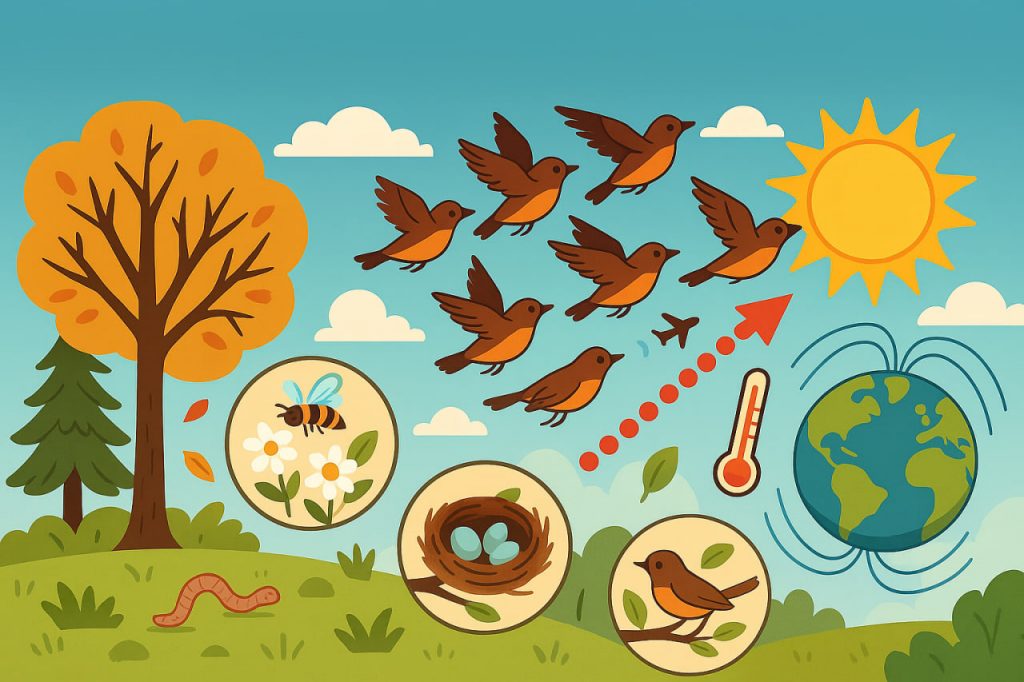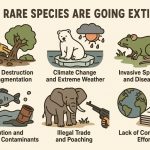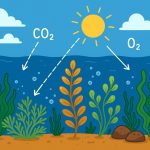Each year, billions of birds around the world leave their summer homes and fly thousands of kilometers to warmer regions. This seasonal movement, known as migration, is one of nature’s most fascinating and complex phenomena. But why do birds make such long and risky journeys, and how do they know where to go?
Seasonal Food Availability
One of the main reasons birds migrate south is the changing availability of food. In northern regions, insects, seeds, and nectar become scarce or disappear entirely during the cold months. Birds that rely on these resources would not survive the winter if they stayed.
By flying to southern regions, where temperatures are milder, birds can find abundant food sources year-round. This ensures that they have the energy needed to maintain their metabolism and prepare for the journey back north in spring.
Climate and Temperature
Birds are warm-blooded animals and need to keep their body temperature within a narrow range. In winter, low temperatures can pose a serious threat to smaller species that cannot generate enough heat or find adequate shelter.
Migrating south helps birds avoid freezing weather, allowing them to conserve energy and reduce the risk of frostbite or death. Warm climates also support a greater diversity of ecosystems, which in turn offer more feeding and nesting opportunities.
Breeding and Nesting Conditions
Interestingly, birds do not fly south to breed—they usually return north for that. Northern habitats often offer better conditions for nesting, such as fewer predators and longer daylight hours. This is why birds typically migrate south to survive the winter and north again to raise their young.
The dual migration cycle is finely tuned to seasonal cues like daylight length, which helps birds time their movements for optimal reproductive success.
Instinct and Navigation Abilities
Bird migration is largely controlled by innate behavior. Many species are born with the instinct to migrate, even if raised in captivity. Scientists have found that birds use a combination of methods to navigate, including the position of the sun and stars, Earth’s magnetic field, and even olfactory cues.
Some species, like Arctic Terns, can travel over 70,000 kilometers a year, using the same routes with astonishing precision. Young birds often learn flight paths by following experienced adults during their first migration.
Energy Efficiency and Survival
While migration is dangerous and exhausting, it increases a bird’s overall survival rate. By escaping harsh conditions and finding better food supplies, birds are more likely to survive the winter and return healthy in the spring.
Over generations, natural selection has favored those birds that migrate successfully. As a result, migration has become a deeply embedded strategy in many bird populations worldwide.
Impact of Climate Change
Modern changes in global temperatures are disrupting traditional migration patterns. Some birds are migrating earlier or later than usual, while others are staying in their breeding grounds year-round. These shifts can lead to mismatches between birds and their food sources, threatening their survival.
Monitoring and understanding these patterns is critical for future conservation, especially for endangered species that rely on precise environmental conditions during migration.
Conclusion
Bird migration is a remarkable adaptation to seasonal changes in the environment. Driven by food availability, temperature, and instinct, birds embark on epic journeys to increase their chances of survival. Understanding this behavior not only reveals the wonders of the natural world but also highlights the importance of protecting the ecosystems they depend on along the way.
Glossary
- Migration — the seasonal movement of animals from one region to another, often for breeding or survival.
- Metabolism — the chemical processes that occur within a living organism to maintain life.
- Warm-blooded — animals that regulate their internal temperature regardless of the environment.
- Ecosystems — communities of living organisms interacting with their physical environment.
- Innate behavior — actions and patterns that are biologically programmed rather than learned.
- Magnetic field — a natural force used by some animals for navigation.
- Survival rate — the proportion of individuals that live through a given period or condition.
- Endangered species — organisms at risk of extinction due to limited numbers or habitat threats.


